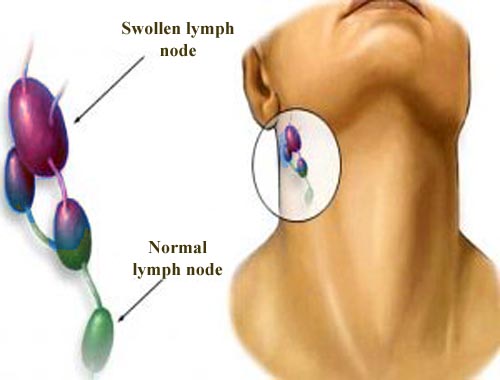Hodgkin's lymphoma (Cancer)
Hodgkin's lymphoma is a cancer of lymph tissue found in the lymph nodes, spleen, liver, bone marrow, and other sites. The cause is not known. Hodgkin's lymphoma is most common among people ages 15 - 35 and 50 - 70. Most commonly presents with painless cervical and-or supraclavicular lymphadenopathy in a young adult. The cancer originating from white blood cells called lymphocytes. It was named after Thomas Hodgkin, who first described abnormalities in the lymph system in 1832. Hodgkin's lymphoma is characterized by the orderly spread of disease from one lymph node group to another and by the development of systemic symptoms with advanced disease. When Hodgkins cells are examined microscopically, multinucleated Reed-Sternberg cells (RS cells) are the characteristic histopathologic finding. Hodgkin's lymphoma may be treated with radiation therapy, chemotherapy, or hematopoietic stem cell transplantation, with the choice of treatment depending on the age and sex of the patient and the stage, bulk, and histological subtype of the disease. The disease occurrence shows two peaks: the first in young adulthood (age 15-35) and the second in those over 55 years old. Past infection with the Epstein-Barr virus (EBV) is thought to contribute to some cases. Patients with HIV infection are more at risk than the general population. Symptoms: Fatigue; Fever and chills that come and go; Itching all over the body that cannot be explained; Loss of appetite; Soaking night sweats; Painless swelling of the lymph nodes in the neck, armpits, or groin (swollen glands) Weight loss that cannot be explained; Coughing, chest pains, or breathing problems if there are swollen lymph nodes in the chest; Excessive sweating; Pain or feeling of fullness below the ribs due to swollen spleen or liver; Pain in lymph nodes after drinking alcohol; Skin blushing or flushing
